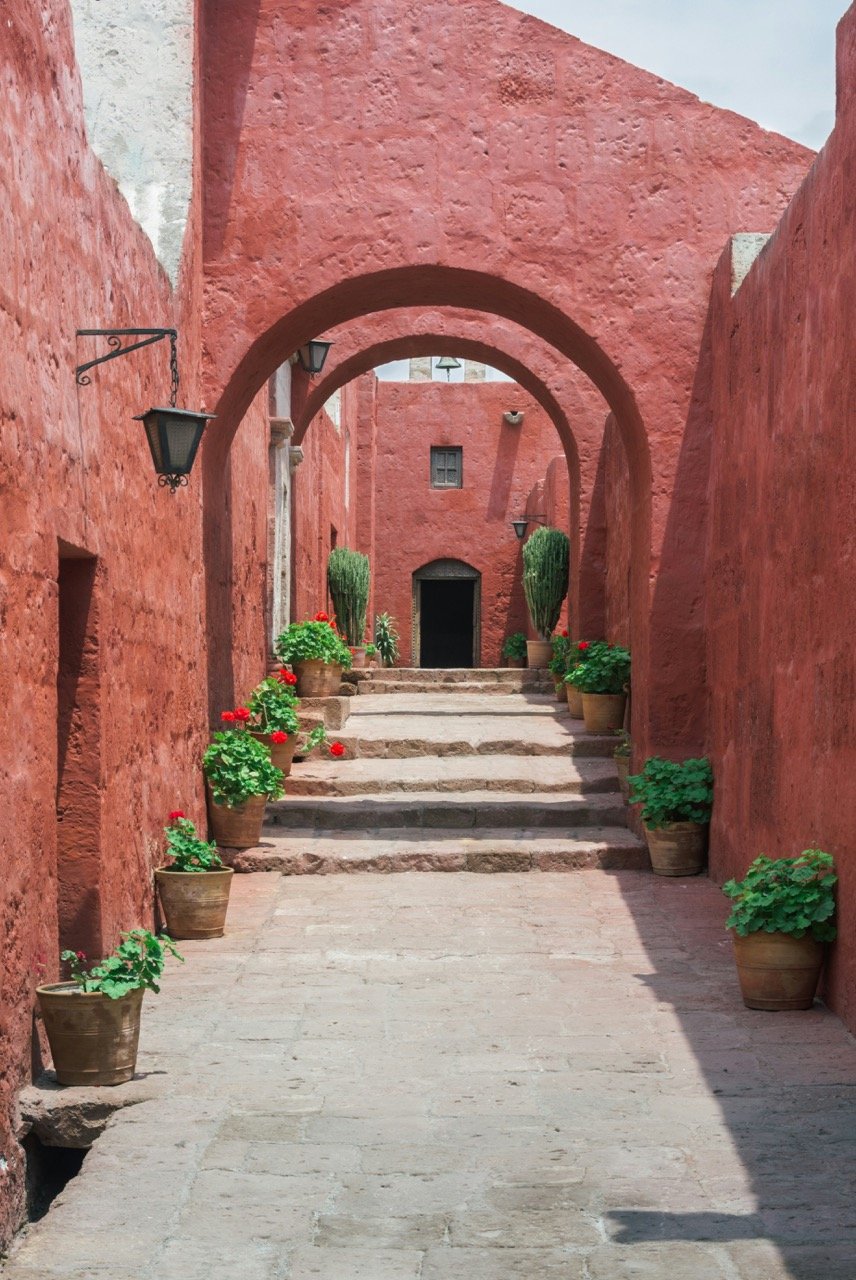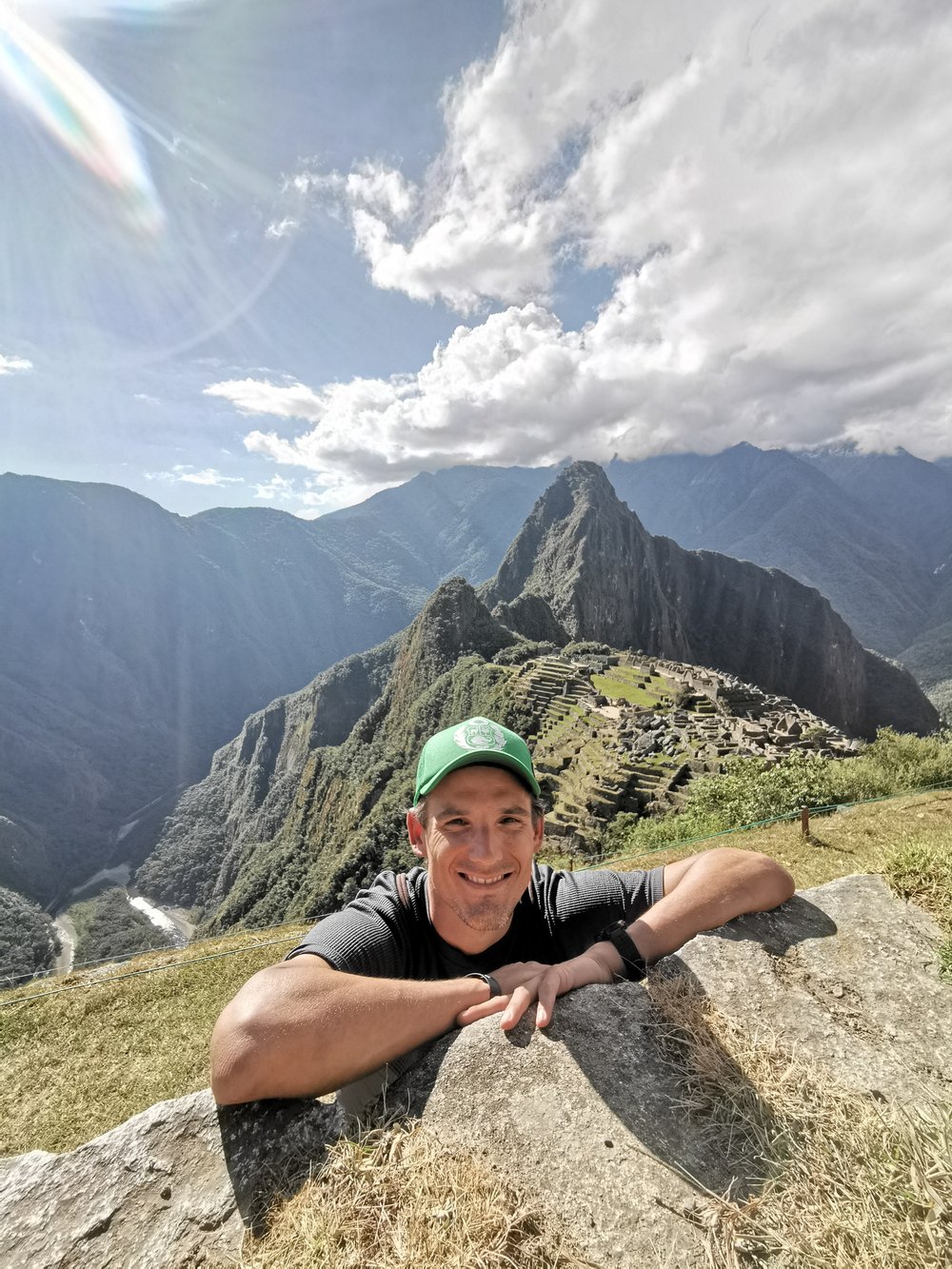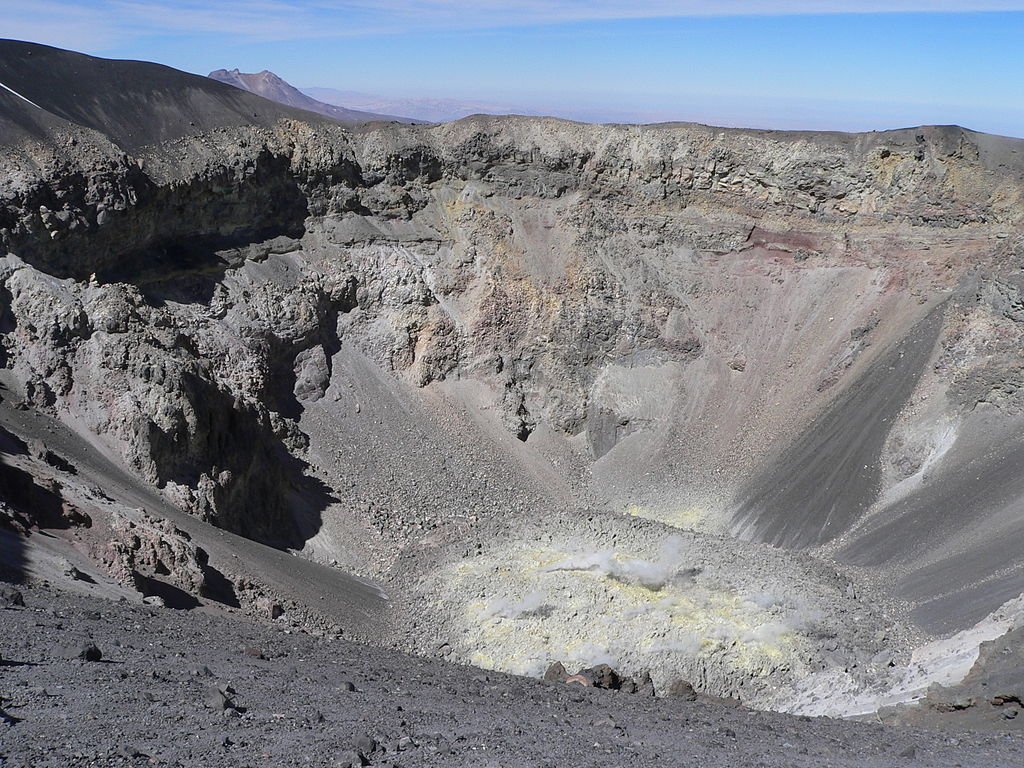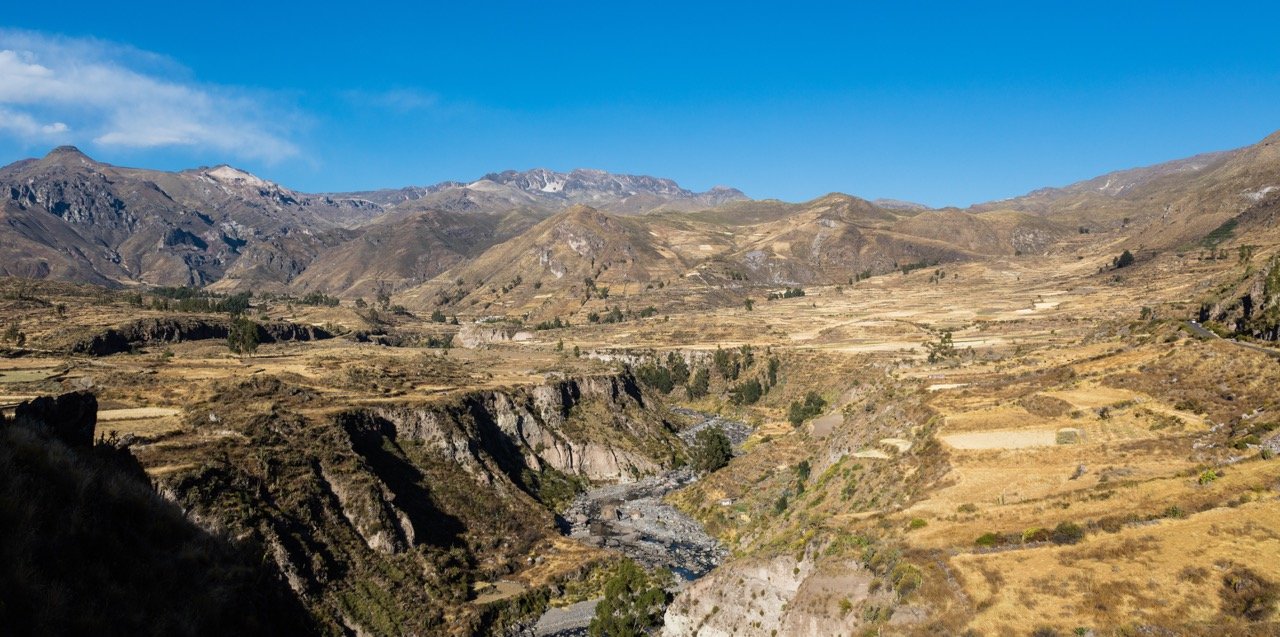Guide to Arequipa - Peru’s Second City
Imagine one of Peru’s most resplendent cityscapes. Imagine a place where buildings made with white volcanic rock, the most impressive of which are Unesco-listed, spread below some of the most iconic peaks of Peru’s Southern Andes. Imagine a place with a proud culture distinct from anywhere else in the country, driven by excellent museums and by a delectable cuisine of specialities like chupe de camarones (prawn chowder) and rocoto relleno (spicy stuffed peppers).
You don’t have to imagine it - you can go there! That place is Arequipa, Peru’s suave second city.
Arequipa is charming enough to warrant a visit in its own right, and you could easily spend a few days exploring the city, but the urban area is only the beginning of the city’s appeal: Arequipa sits in the middle of a region with majestic mountains, volcanos, and valleys, all carved out by two of the world’s deepest and most dramatic canyon systems, the Cañon de Colca and the Cañon de Cotahuasi.
Venturing out into the depths of these gobsmacking gorges is an unforgettable experience, and the opportunities for adventure in the canyons is endless: ziplining, multi-day treks, tradition-steeped villages, towering rock formations, plunging waterfalls, and of course, seeing the majestic Andean Condor. If you’re after adventure and excitement, the canyons never disappoint.
Read on for my guide on what to see and do in and around this wonderful city!
Table of Contents
Please note: some of the links in this article are affiliate links. If you book using one of them, we’ll earn a small commission. All of our info is free to read and free of ads, so we appreciate it!


Where is Arequipa?
Arequipa, Peru’s second-biggest city, lies in the southeast of the nation, about 630 miles (by road) southeast of Lima, and 240 miles northwest of the Chilean border near Tacna.
This mountain and volcano-filled region is officially part of Peru’s Southern Andes mountains, however, it is not the peaks that best define the area, but rather the deep and dramatic canyons beneath them.
For travelers, this area has become synonymous with ‘canyon country’, making Arequipa its own geographical entity within the greater mountain chain of the Peruvian Andes.
The canyons are a bit north of Arequipa, with the Colca Canyon about 100 miles north of the city, and the Cotahuasi Canyon around 230 miles to the northwest.
Arequipa is also close to the southern end of Peru’s South Coast, being about two hours’ drive northeast of the south coast city of Mollendo.
Meanwhile, if you travel northeast from Arequipa, you come into the Lake Titicaca region, reaching Lake Titicaca’s transport hub, Juliaca, in five hours.
How to get here
By plane
Arequipa’s airport is one of the busier in Peru, and it is served by daily direct flights with Lima and Cusco. The journey from either city takes between 1-1.5 hours and the main carrier is Latam. Prices for a one-way flight are in the $70-85 USD range if booked at least a few days before.
There are no other airports in the region, so if you plan to arrive by air, it will be into Arequipa. Once here, all onward travel within the region is always overland – by local bus, combi, colectivo, or tour operator (see below for more details).
By bus
As with just about anywhere in Peru, Arequipa is well-served by long-distance buses, and can be reached overland from a host of other destinations in the country. Generally, I suggest booking with Cruz del Sur or a similar high-end operator. Prices and details below are for Cruz del Sur routes.
From Lima, the bus takes 16-18 hours and one-way tickets will cost around $35 USD if you book with a high-end company.
From Cusco, the bus takes approximately 10 hours and one-way tickets cost about $20 USD. Buses are usually overnight, leaving in the early evening and arriving into Arequipa early in the morning.
From Lake Titicaca (Puno or Juliaca) the journey takes around 6 hours and one-way tickets cost approximately $15 USD.
From Nazca, the journey takes 9-10.5 hours, with most trips being overnight, leaving late in the evening and arriving mid-morning. One-way tickets with Cruz del Sur cost about $30 USD.
Why visit
Arequipa’s cathedral
The Santa Catalina monastery
Plaza de Armas
Most people visit Arequipa simply because it’s the jumping off point for visits to Colca and Cotahuasi canyons, but the city is also an exceedingly charming place in its own right.
Built out of glistening white sillar volcanic stone, central Arequipa is elegant and beautiful, crowned by a gorgeous cathedral and the colorful and iconic Santa Catalina monastery.
Its surroundings are impressive too, with three volcanos towering over the horizon and visible from almost anywhere in town.
The food here is excellent as well, and very distinct from the coastal cuisine found in Lima and the Andean food found in Cusco and the highlands.
A big part of what I find so appealing about visiting is that everything about Arequipa is simply different from other parts of Peru. It’s hard to put your finger on exactly what, but you can sense it as soon as you arrive.
There’s also the distinct air of a frontier town, which it is in many ways. Almost 15 hours by bus from Lima, 10 from Cusco, 9 from Nazca, and 7 from Puno, it’s the only major urban center in an enormous region. In modern day, like for almost all of its history, Arequipa exists as its own entity.
And then of course there’s Colca canyon and Cotahuasi canyon beyond the city, two of Peru’s most majestic natural sites. Both are among the deepest canyons in the world, and they offer scenery unlike anything you’re likely to have seen before.
How long to spend
Arequipa
To visit Arequipa and the surrounding area, you need a bare minimum of 3 days, with 5 being the ideal number. You’ll want at least one full day to enjoy the city and then 2 days to visit Colca Canyon, so 3 days is the absolute minimum.
If you want to also climb El Misti volcano, explore Cotahuasi canyon (which is further than Colca), or get out to some lesser-visited sites, you’ll need an additional 2-4 days.
Most visitors leave Arequipa regretting that they didn’t give themselves more time, so don’t make their mistake.
I include ideas on how to spend anything from 3-10 days in the region at the bottom of the article.
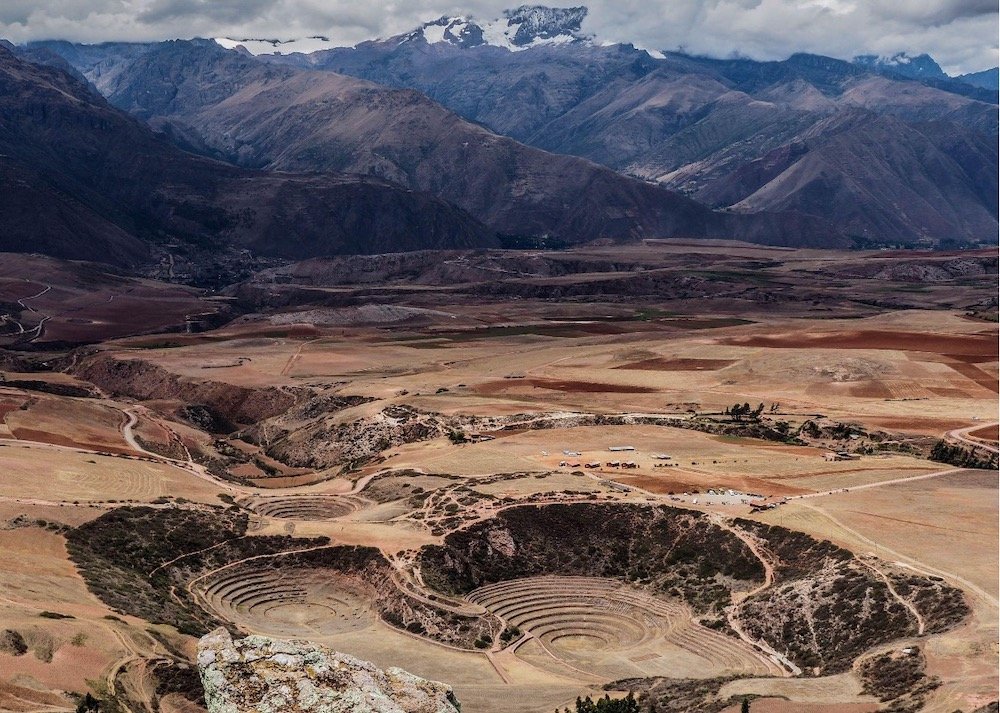
What to see and do
In the city itself, you have a very pretty historic center and charming neighborhoods like San Lázaro and Yanahuara which are perfect for wandering. There are a handful of great viewpoints, lots of pleasant squares in which to people watch, and of course the gorgeous Santa Catalina Monastery. You’ll also find many good restaurants, and lunch at a picantería is an absolute must.
There is plenty to keep you occupied for a day or two.
And in the countryside away from town, you have El Misti volcano, the Colca and Cotahuasi canyons (two of the deepest in the world), some pretty villages, and endless fabulous landscapes.
1. Stroll around the city
Just strolling around in awe around this Unesco-listed historic city is an architectural treat. Start at the Plaza de Armas, the history-packed central square flanked by its photogenic arched arcades and one of the nation’s biggest cathedrals, gleaming with its white volcanic stonework.
Take a tour of the cathedral for behind-the-scenes sights such as an up-close look at one of South America’s biggest church organs and some incredible rooftop views. Aim for at least four nights here.
Be sure to make it over to the San Lázaro district as well as Yanahuara, both of which are picturesque and pleasant for a stroll.
2. Marvel at the mummified remains in Arequipa’s Museo Santuarios Andos
The almost perfectly preserved body of a 12-14 year-old girl from the heyday of the Inca Empire, sacrificed to the gods some time in the mid-15th century, was discovered by a climbing expedition of Nevado Ampato mountain in 1995. The icy temperatures had kept the body almost un-decayed for over half a millennium.
The body, known as Juanita the Ice Maiden, is the highlight of this fascinating museum. Set aside two hours for a visit.
3. Take on the challenge of scaling El Misti volcano
The peak soaring above Arequipa is 9,100-ft El Misti, a mountain climbers can take on via a two-day ascent broken overnight at the base camp at around 14,760 ft. You’ll need to be able to use an ice axe as this is a ‘nevado’, a snow-and-ice-capped peak for most of the year.
You should hire a guide in Arequipa for the ascent. This is a volcanic peak and you’ll see fumaroles belching gas below the summit.
El Misti
The crater in El Misti. Photo: R.D. Hoogendoorn, Public domain, via Wikimedia Commons
4. Sample Arequipeño cuisine in a picantería
Arequipa’s signature eateries are picanterías, lunchtime neighbourhood restaurants where traditional set menus offer regional specialties like chupe de camarones (prawn chowder) and ocapa (potato in a feisty creamy sauce) and rocoto relleno (stuffed peppers). Chicha (corn beer) is also served.
The eateries are communal, meaning you may well sit alongside locals at large tables, and get into some interesting conversations over food. Great picanterías include La Nueva Palomino and La Capitana, but there are dozens in the city.
Here are a few dishes to try:
Adobo - a local pork-flavored soup that is served on Sundays, beginning in the early hours of the morning. It’s a popular thing to go eat after a long night of partying. There’s a phrase in Arequipa - “hasta el adobo” - which people will sometimes say when heading out for the night. What they mean is that they’ll be out partying until it’s time to eat some adobo, aka until the morning!
Rocoto relleno - These are bell peppers stuffed with meat and cheese and then baked in the oven.
Chupe de camarones - A milky and creamy soup made with camarones, shrimp (or sometimes crayfish).
A meal at La Nueva Palomino. Photo: Bex Walton, CC BY 2.0, via Wikimedia Commons
5. Visit the Monasterio de Santa Catalina
Looking around one of Peru’s most striking colonial religious buildings should not be missed. I recommend taking a guided tour of this compelling monastery - founded in 1579-1580 - for informative insights into its history.
However, you can also visit independently and explore on your own the tranquil cloisters, flourishes of Baroque architecture, and lavish murals. Allow an hour or two to properly visit.
6. Catch spectacular views at Mirador de Yanahuara
Grab one of the most beautiful and dramatic panoramas of a city anywhere in Peru from this viewpoint about a mile northwest of Arequipa’s Plaza de Armas, from where the whitewashed walls and terracotta roofs of the city’s venerable Unesco-listed historic center is backed by the iconic volcanic peak of El Misti. While up here, make sure to grab a queso helado ice cream from one of the vendors selling it in the square.
After visiting the viewpoint, also go for a walk around the Yanahuara neighborhood. It’s a very pretty part of the city and less hectic than the center.
For another good view, the Carmen Alto viewpoint on the edge of the city provides very expansive views over the surrounding volcanos and countryside beyond the city.
Mirador de Yanahuara. Photo by Sergio Benavides via Pexels
El Misti Volcano behind the Yanahuara arches. Photo: Véronique Debord-Lazaro, CC BY-SA 2.0, via Wikimedia Commons
7. Journey out to the Toro Muerto petroglyphs
Fanning out across several square miles of arid country near the settlement of Corire are as many as 5000 depictions of people and animals, elaborately etched into scattered boulders. They are thought to date from the time of the Wari culture’s domination of the region between 500 and 1000 AD.
It is easiest to arrange a visit as part of a tour from Arequipa, and makes a full day trip from there.
8. Watch condors at Cruz del Cóndor (Colca Canyon)
One of the absolute highlights of a trip to Southern Peru is to stand at this mirador (viewpoint), from where the land falls away into sheer rocky canyon drops. But it is not merely the scenery that is incredible, but that – with luck and patience – the resident group of Andean condors will coast on the thermal air currents rising up from the canyon, making for a truly stunning spectacle.
Give yourself an hour at the viewpoint and visit as part of a tour or independent trip to the Cañon de Colca.
9. Soak in La Calera hot springs
Sooth the aches and pains of a multi-day hike through canyon country by relaxing in these natural thermal pools a mile or so outside the Cañon de Colca transport hub of Chivay.
10. Get deep into the canyons in Cabanaconde
From Chivay, you can get well off the beaten path by heading deeper into the canyon to the little lower canyon village of Cabanaconde. From here, the canyon’s sides are noticeably deeper and steeper.
There is a spectacular viewpoint of the canyon and its mountainous surrounds (Mirador de San Miguel), plus a vertiginous path that corkscrews almost 4,000 feet down to the Río Colca and the canyon bottom (part of the El Classico Trek).
Base yourself here for at least one night, but you will likely need to use it to overnight two or three times at the beginning/end of the multi-day trails through the canyons.
Bring cash for purchasing anything in Cabanaconde and its surroundings as you will not find any ATMs here.
Colca Canyon. Photo: Diego Delso, CC BY-SA 4.0, via Wikimedia Commons
11. Hike the El Classico Trek through the Cañon de Colca
This two-to-three-day trek is, as its name suggests, the classic multi-day Cañon de Colca hike. It’s a round-trip tramp beginning and ending in Cabanaconde, descending into the canyon from the Mirador de San Miguel and returning back up to Cabanaconde from The Oasis.
There is accommodation available and camping spots along the hike, but bring cash for purchasing anything en route (no ATMs).
Hiking near to Chivay. Photo: Murray Foubister, CC BY-SA 2.0, via Wikimedia Commons
12. Zipline across one of the world’s mightiest canyons
For an added canyon thrill, the ziplines of between 2000 and 6500 feet far above the rock walls and forest of the craggy Colca valley have something for all levels of zip-lining ability.
The ‘Monster’ sees you suspended 550 feet above the canyon as you whoosh, with the need to scale a ladder up a nearly vertical rock face as part of the experience.
13. Relax in The Oasis at the bottom of Cañon de Colca
There is respite for tired trekkers at the bottom of the canyon from Cabanaconde: basic bungalow accommodation, each with its own private pool and with food and drink available.
The beauty of the place is relaxing, looking back up the seemingly impassable canyon walls of rock: it is perhaps here, more than any other point, that you truly appreciate the scale of the canyon. Definitely try to stay over for the night to truly relax.
14. Visit the lovely village of Yanque
This is perhaps the most fetching village in the Cañon de Colca: worth a look around or even an overnight stop for its likable main square, museum and the nearby pre-Inca ruins of Uyo Uyo.
Yanque’s church and main square. Photo: Diego Delso, CC BY-SA 4.0, via Wikimedia Commons
15. Trek to the source of the Amazon
Laguna McIntyre on the craggy slopes of Nevado Mismi has, after centuries of debate, been agreed upon as the official source of the mighty Amazon River. Before getting there, it feeds into the Apurímac, Marañon, and Ucayali rivers, which in turn flow into the Amazon.
See the lake as part of a three-day round-trip hike beginning in the Cañon de Colca village of Lari and ending in Tuti.
Nevado Mismi, with Lake Lima Cota in the foreground. Photo: Daniel Stein, CC BY-SA 3.0, via Wikimedia Commons
16. Delve into the depths of Cañon de Cotahuasi
Explore a gorge twice as deep as the Grand Canyon in the stupendous Cañon de Cotahuasi, with sections dropping around 11,500 feet. The deepest known canyon in the world, it makes even the Cañon de Colca look a little modest.
However, few tourists make it out here as it’s around ten hours and 250 miles northwest of Arequipa via rough roads. The main canyon settlement is Cotahuasi, served by sporadic daily buses from Arequipa, from where you can hike to thermal baths, waterfalls, pre-Inca ruins, rock formations and traditional villages.
Independently, you’ll need to devote at least three or four days to exploring the canyon if starting out from Arequipa.
17. Raft the Río Cotahuasi
One of Southern Peru’s best white-water rafting experiences is on the Río Cotahuasi, the river that churns through the homonymous canyon. Book one of the operators in Arequipa to arrange the multi-day river run, which features Class V rapids and surges right through the deepest-known canyon on the planet.
Indeed, if you want to plumb the canyon’s deepest depths, you can only do this by rafting along the river flanked by sheer walls of rock.
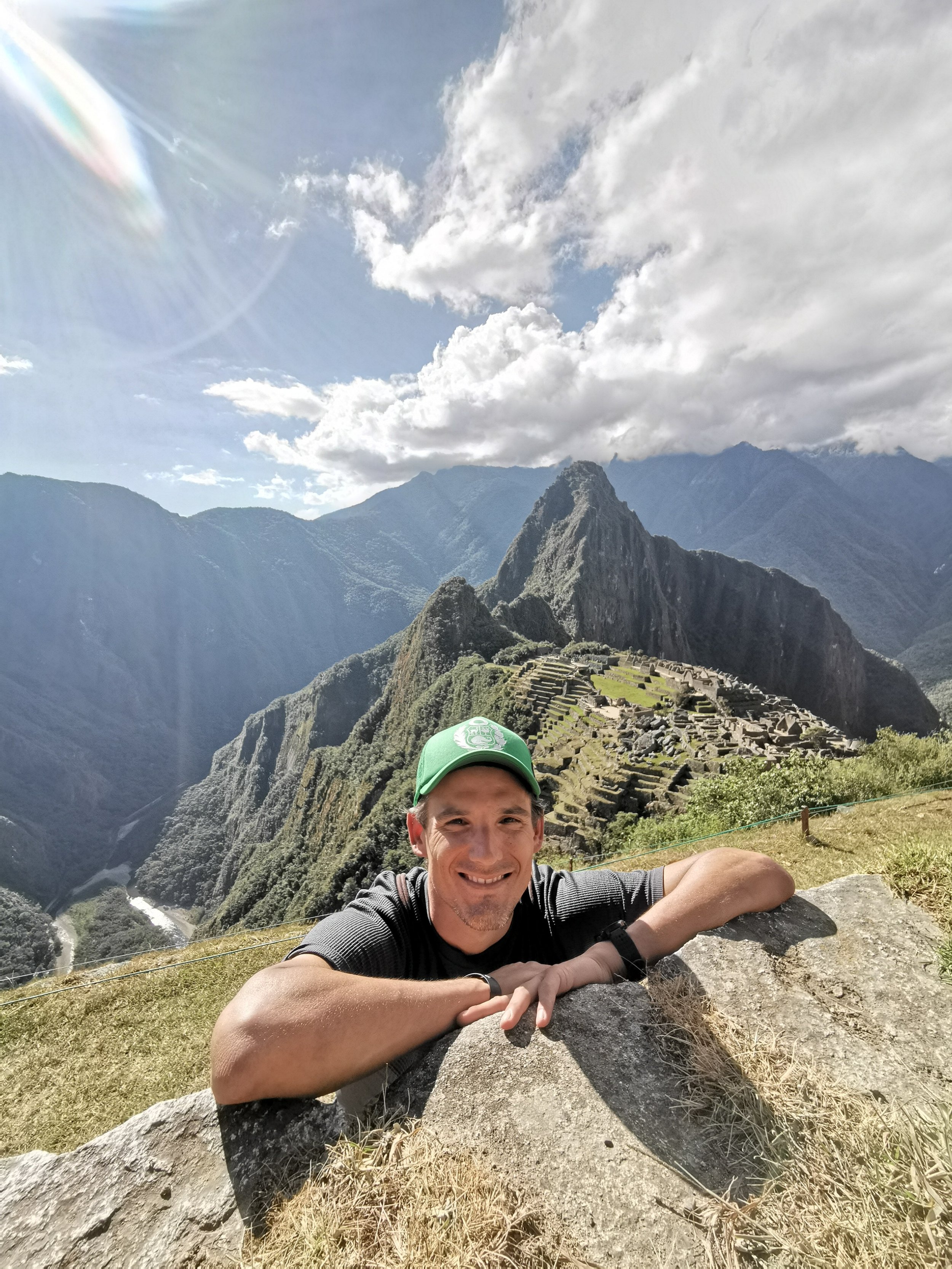

Where to stay
When visiting the region, Arequipa is obviously the main place to stay and you can make it work as a base from which to day trips around the region.
You could base yourself in Arequipa for a week or more, sampling the exceptional cuisine, exploring all the churches, museums, and colonial buildings, and heading off on days out to the likes of the Toro Muerto petroglyphs or even the Caňon de Colca.
However, not everywhere is visitable as a day trip, so for those travelers with enough time to stay in multiple bases, I’d suggest splitting your time between Arequipa and one of the Cañon de Colca communities. Getting out of the city and spending more time in the canyons will give you a much better appreciation for this gorgeous area.
Here are a few of my favorite hotels in the city:
When exploring further away from the city, here are the towns that I think are your best bets for accommodation:
Chivay
This is the main Cañon de Colca transport hub and one of the most accessible places in the canyons, so it makes for a very popular overnight stay.
Activities include a soak in some local hot springs, ziplining, and some canyon hikes that start right from town.
If you plan to travel further into the canyons, I strongly recommend withdrawing plenty of money here, as there will be no ATMs as you get to more remote areas.
Cabanaconde
On balance, Cabanaconde is the best and one of the most authentic Cañon de Colca bases: the canyon around here is steeper, deeper, and more dramatic, and Cabanaconde as a result is more atmospheric than Chivay.
Far fewer visitors come here as it’s harder to reach. If you do make it this far, I suggest staying for at least a few nights and using the town as your base for exploration of the surrounding area.
Cotahuasi
If you plan to spend some time in the Cotahuasi Canyon, then the town of Cotahuasi is your only logical base. With 3,500 residents, this is the largest town in the area and it has a few basic hotels, some restaurants, and shops.
Many of the hiking trails through the canyon begin or end here, so you will inevitably find yourself in town at some point.
How to get around
The road leading from Arequipa to Chivay
While long-distance buses are excellent options for getting into Arequipa and traveling between it and other regions, they don’t operate much within the region itself.
That means that once you reach Arequipa, if you want to get out into the canyons and other areas, you will be either need to book tours with local companies (that provide transportation) or organize your trips via less regular and more informal transportation.
See below for more in-depth info on all your transportation options.
Combis and colectivos
For the best combination of price, convenience, and comprehensive coverage, combis (shared buses - usually minivans really) and colectivos (shared taxis) are usually your best bet. Combis and colectivos are everywhere and they travel all over the region.
Both means of transport operate in a similar way, running fixed routes, and stopping along the way to drop off or pick up passengers. They may have some standard stops along the route, but will often only stop if someone requests to get off or if they need to fill an empty seat.
In the remote canyon country around Arequipa, where waits for a full vehicle can at times be quite long, taking combis and colectivos is sometimes a painstaking process (but is invariably a great insight into local life).
When trying to get from Arequipa to the canyons, you will have no trouble finding onward transit to the town of Chivay (entryway to the Colca Canyon). This is a very popular route and combis and colectivos fill up pretty quickly and leave frequently.
For the town of Cotahuasi (for the Cotahuasi Canyon), which is around 7 hours from Arequipa, you will likely need to make a transfer along the route, so you’re better off taking an official bus.
Tour operators and tour buses
Booking a tour with a local company is sometimes the best way to reach some of the out-of-the-way destinations in this region.
Tours can be arranged for most sorts of adventure in the Cañon de Colca, some trips to the Cañon de Cotahuasi, and for places like the Toro Muerto petroglyphs.
For destinations like the El Misti volcano and other mountains that require competent climbing skills, I strongly advise visiting with a responsible tour operator and licensed guides.
Weather in Arequipa
The dry season, which runs from April to November, is the best time to visit Arequipa and the canyons. During this period, there is little to no rain and the region experiences more-or-less stable, consistent daytime temperatures averaging around 72°F.
While the weather is definitely the best at this time of year, you should be aware that the peak of high season is from June to August, and this is when you’ll find the highest number of international visitors traveling here (because it coincides with their summer holiday).
December through March is the wet season and travel here drops precipitously during these months. Rainfall is extremely high for much of this period, especially in January and February. If you can come at a different time, I would highly advise it.
Dry Season: April to November
The climate in Arequipa and the Canyons is similar to that of much of the Peruvian Andes. April is the beginning of the drier, sunnier period of the year, when the rains go from heavy to almost non-existent, and everywhere looks lush and green after three months of precipitation.
The beginning of this season is often marked by one of Peru’s best Semana Santa (Holy Week) celebrations in Arequipa. April and May combine dry weather with especially green-looking scenery and lower crowd numbers.
June through August see higher tourist numbers (although still low compared to Cusco and Lake Titicaca regions) and festivals such as the anniversary of Arequipa.
September to November are still dry, almost rainless months and again see far fewer tourists.
Wet Season: December to March
While the temperatures don’t change tremendously between dry and wet season, the amount of rainfall most certainly does. From December to March, there is steady, regular rain, making travel her rather unpleasant.
The constant rainfall also makes trails a muddy slog, and when the rain is heavy enough, completely impassable. Roads out to many of the outlying destinations in the region also may be very difficult to traverse.
Weather aside, one of Arequipa’s, and all of Peru’s, best festivals occurs either in March or April, dependent upon when Easter falls. Semana Santa (Holy Week) brings a riot of colour to the city and is a bright spot in the rainy season.
For more info on visiting Peru in each season, check out our guide to the best time to visit Peru.
How to spend 3-10 days in and around Arequipa
Looking at the map, Arequipa and the canyons are spread over a fairly small geographic area, and since it’s “just” a city and a few canyons, you might think that you can get a sufficient taste for it very quickly, maybe even in just a couple of days.
In practice, it’s fairly likely that once you get here, you’ll find yourself wanting to spend more time than you budgeted for. The city itself offers pretty much everything that Lima or Cusco do, but without the crowds and with a far more laid-back vibe.
And canyon country serves up astonishing scenery every bit as impressive and intriguing as Cusco’s Sacred Valley, but again with a tiny fraction of the crowds.
Keep in mind that neither the Colca nor Cotahuasi Canyons are close enough to Arequipa to be comfortably visited on a day trip, so if you intend to see either of them, you should budget at least a full day with an overnight (for Colca) or a few days for Cotahuasi. Colca is about 3.5 hours away from Arequipa, while Cotahuasi is 7+.
3-5 days - to see the highlights
If this is your first time in Peru, or if you’re trying to piece together a countrywide trip with limited time, 3-5 days is what I’d recommend setting aside to see Arequipa and the canyons.
Take a day to see the sights of colonial, Unesco-listed Arequipa – a trip to see the Inca-era mummy Juanita at Museo Santuarios Andinos, a tour of Monasterio de Santa Catalina, a reconnoitre of the cathedral and the Plaza de Armas – and throw in some local cuisine, best of all at a picantería.
Do a day trip to the Cañon de Colca with an Arequipa tour operator, or if time allows, a two-day trip going there independently yourself and staying in Chivay. If you opt for the latter option, you can do canyon hikes and canyon ziplining before soaking it off in a natural thermal pool.
Do not miss a trip to the Cruz del Cóndor mirador to catch sight of the majestic birds soaring high above the canyon floor.
Round out your time with a visit to the Mirador de Yanahuara for a picture-perfect view of Arequipa backed by El Misti volcano.
7-10 days - to explore the canyons in depth
If you have time to spare and can dedicate a week or more to this region, you’ll be able to explore it in depth and get a bit off the beaten path as well.
And while 7-10 days feels like a lot, even with this much time I’d still suggest zoning in on one of the canyons (Cañon de Colca or the Cañon de Cotahuasi) for your trip rather than trying to combine adventures in both.
Whichever you choose to visit, you won’t need to rely on tour operators as you’ll have enough time to travel independently. This is ideal, as it means you can dedicate as much time as you want to a site, activity, etc., rather than being rushed through quickly by a tour company.
So, for your week to ten days, I’d suggest giving yourself three full days in Arequipa, two at the beginning and one at the end. This will give you plenty of time to see the main sights and choose any tour operator you may want to book for forays into the canyons.
If you opt to spend your time in the Cañon de Colca, head to Chivay for a couple of nights, and then go deeper into the canyons to Cabanaconde on your third day. Then, take three or four days to do a multi-day canyon trek like the El Classico. Afterwards, make your way back to Arequipa via Cabanaconde, Chivay, and the pretty village of Yunque.
Alternatively, if you opt for Cotahuasi, you’ll have to expect for two days to be taken up just as travel days (one to get there, one to get back). From Cotahuasi village, you can arrange trips by foot or by bus to visit waterfalls and sleepy traditional villages, and to cut down on travel time back and forth, you should plan to stay overnight in these tiny towns.
This type of trip will easily take up two or three days. In this case, you’ll be staying overnight at basic and rust, but beautifully-set lodgings.
More Peru travel info
For more advice on planning your trip to Peru, have a look at some of our other guides and itineraries!



Connect with Nicho





